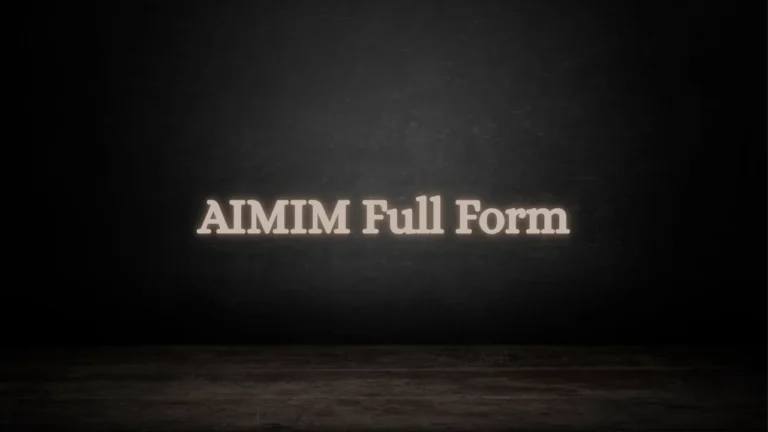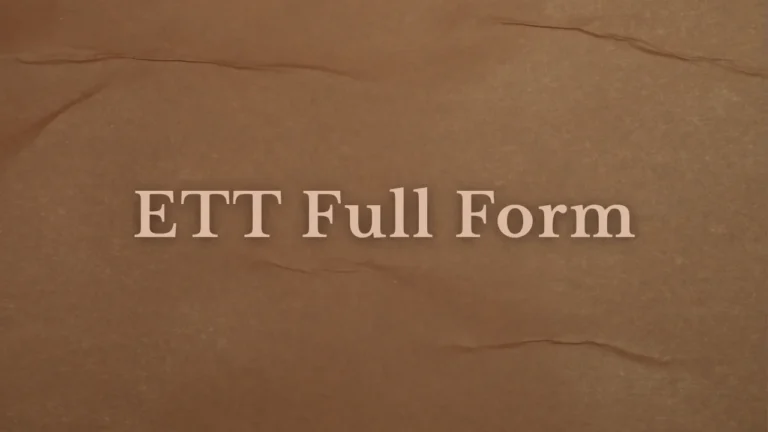FYIP Full Form in Business Communication and Other Fields 2025

Understanding abbreviations is important in today’s fast communication era. One such abbreviation is FYIP full form, which is widely used in professional and informal conversations. In emails, letters, and business documents, short forms save time but can sometimes create confusion if not explained properly.
Many people confuse FYIP with the common FYI, so learning the difference is useful. Just like people often search for DMO Full Form to understand medical or administrative terms, exploring FYIP helps build clarity in communication. This article explains the meaning, history, uses, and importance of FYIP in detail.
| Aspect | Details |
|---|---|
| Abbreviation | FYIP |
| FYIP Full Form | For Your Information Please |
| Usage | Common in professional and informal conversations |
| Where It Appears | Emails, letters, business documents |
| Purpose | Saves time in communication but may cause confusion if not explained |
| Common Confusion | Often mistaken for FYI (For Your Information) |
| Why Important | Helps build clarity in communication |
| Similar Search Example | People also look for meanings like DMO Full Form in medical or administrative terms |
FYIP in Business Communication
In the corporate world, emails and reports are written daily. Professionals prefer using FYIP form when they want to share information politely. It helps maintain respect when addressing managers, executives, or clients. Instead of a direct FYI, FYIP softens the message and shows courtesy. This makes it an important part of business communication.
FYIP in Academic Communication
Teachers, students, and academic staff also use the FYIP form in emails or official notes. When students submit projects or assignments, writing FYIP adds a touch of formality. Similarly, professors or administrators may use it when sending instructions. It ensures that communication remains respectful and professional in education.
FYIP in Government and Administration
In government offices, officials exchange letters and documents that require a polite tone. Here, FYIP form is preferred because it conveys information respectfully. Whether it is inter-departmental communication or notices for the public, FYIP maintains formality. This is why it has value in the field of administration.
FYIP in Digital and Corporate Messaging
With the rise of emails, instant messaging apps, and corporate platforms, FYIP has gained relevance online. The FYIP form appears in formal emails, LinkedIn posts, and even organizational chat groups. Unlike casual texting, professional platforms value politeness, which makes FYIP a good fit in digital communication.
FYIP in International Communication
In global communication, tone and respect vary across cultures. The FYIP form is especially useful in countries where politeness is a cultural norm. By using FYIP, professionals can avoid misunderstandings and present themselves as courteous. This makes it an important abbreviation in international relations and global business.
Difference Between FYI and FYIP
The confusion between FYI and FYIP is common, so understanding the difference is important.
| Term | Full Form | Usage Context | Tone |
|---|---|---|---|
| FYI | For Your Information | Used in casual and formal communication | Direct |
| FYIP | For Your Information Please | Used in formal, polite, and respectful communication | Polite |
From this comparison, it is clear that FYIP full form emphasizes politeness, while FYI is direct and straightforward. Both are correct, but choosing between them depends on the communication setting.
Importance of FYIP in Professional Communication
In a professional environment, language matters a lot. Adding “Please” in communication shows respect and humility. For example, when sending a report to a senior manager, using FYIP conveys professionalism. It helps create positive impressions, which is valuable in careers and business. The FYIP form highlights courtesy and professionalism in everyday communication.
Common Uses
The FYIP form is applied in different contexts. Here are some major examples:
- In emails where polite sharing of information is required.
- In business letters when addressing seniors or officials.
- In education when students send assignments or information to teachers.
- In government communications where formality is essential.
Each of these cases shows that FYIP is more than just an abbreviation. It is a sign of respect in communication.
Examples of FYIP in Sentences
To understand better, here are a few examples of how the FYIP form can be used:
- “Dear Sir, FYIP the attached file contains the monthly report.”
- “Please find below the data FYIP for your kind reference.”
- “I am sharing the updated project details FYIP to keep you informed.”
These examples show how adding “Please” makes the tone soft and professional.
Why Politeness Matters in Abbreviations
Language is not only about words but also about tone. In business and education, a polite tone builds trust. Using the FYIP form instead of FYI gives the impression that the sender is respectful. This is why many organizations encourage their employees to use polite expressions in communication. It reflects positively on both the individual and the company.
Misconceptions About FYIP
Some people think that FYIP is not a standard abbreviation. However, it has gained popularity in many professional circles. Another misconception is that FYIP is unnecessary since FYI already exists. But in reality, the FYIP form adds value by showing extra courtesy. This is why many professionals prefer it.
FYIP Full Form in Digital Communication

Digital communication, especially emails, WhatsApp messages, and corporate chat platforms, uses abbreviations frequently. While FYI is dominant, FYIP is gradually becoming common in formal emails. It is rare in casual texts but frequent in official communication. This shows how the FYIP form is finding its place in modern communication styles.
Comparison with Other Common Abbreviations
To better understand FYIP, it helps to compare it with other popular abbreviations used in communication.
| Abbreviation | Full Form | Context |
|---|---|---|
| ASAP | As Soon As Possible | Urgent tasks |
| BTW | By The Way | Casual conversation |
| FYI | For Your Information | Informal and formal |
| FYIP | For Your Information Please | Polite and formal |
| ETA | Estimated Time of Arrival | Travel, delivery, projects |
This comparison shows that FYIP is unique because it combines information-sharing with politeness.
Academic Use of FYIP
In schools and colleges, teachers and students also use the FYIP form. Teachers may write FYIP when giving instructions or notices. Students often use it while submitting projects or writing to professors. It is especially common in formal letters and emails sent to administration offices.
Business Use of FYIP
In the business world, professionalism is vital. Emails to clients, managers, or senior executives must be polite. This is where FYIP becomes useful. Instead of saying only FYI, adding “Please” softens the message. For example, sending a financial report or project update becomes more professional with FYIP. The FYIP form ensures business communication stays respectful.
Relation with Polite Communication Styles
Many cultures value politeness highly. In Asian countries, polite communication is a cultural norm. This makes the FYIP form very suitable for use in those regions. By using FYIP, people show respect in both professional and personal communication.
Alternatives to FYIP
Sometimes, people prefer writing the full phrase “For Your Information Please” instead of the abbreviation. This avoids confusion and makes the message clearer. Other alternatives include phrases like “Kindly note” or “Please be informed.” However, the abbreviation FYIP is faster and convenient. The FYIP form balances speed and politeness in communication.
FYIP in Social Media
On social media platforms, abbreviations are common, but FYIP is less visible compared to FYI. However, professionals on LinkedIn and Twitter sometimes use FYIP when sharing reports or official data. This shows that the FYIP form is slowly entering even digital social spaces where professionalism matters.
How FYIP Improves Email Etiquette
Email etiquette is the foundation of modern professional communication. Adding FYIP at the start of a message makes the reader feel respected. For example, writing “FYIP the agenda for tomorrow’s meeting” looks professional. It not only conveys information but also shows politeness. This is why many companies encourage employees to learn and use FYIP form in emails.
Relation Between FYIP and Other Professional Terms
Like MICU Full Form, which is important in healthcare, FYIP is important in communication. Both show how abbreviations make communication faster. They also highlight how certain fields adopt abbreviations to save time but still maintain professionalism. FYIP is not technical like MICU, but it is socially important.
Why FYIP Matters Today
In today’s fast world, time is short, but respect is always important. Abbreviations like FYIP save time but also keep politeness alive. That is why the FYIP form is still relevant and continues to grow in usage. It helps balance speed with courtesy in both offline and online communication.
Conclusion
The FYIP full form means “For Your Information Please,” and it plays an important role in professional communication. It adds politeness to the commonly used FYI abbreviation. From schools to businesses, it is used to show respect and professionalism.
Unlike other abbreviations that sound direct, FYIP softens the tone and makes the sender appear courteous. Just like people search for terms such as DMO or MICU to understand fields like medicine or administration, learning FYIP helps improve communication. In the future, as business and academic environments evolve, FYIP form may become even more widely recognized.





